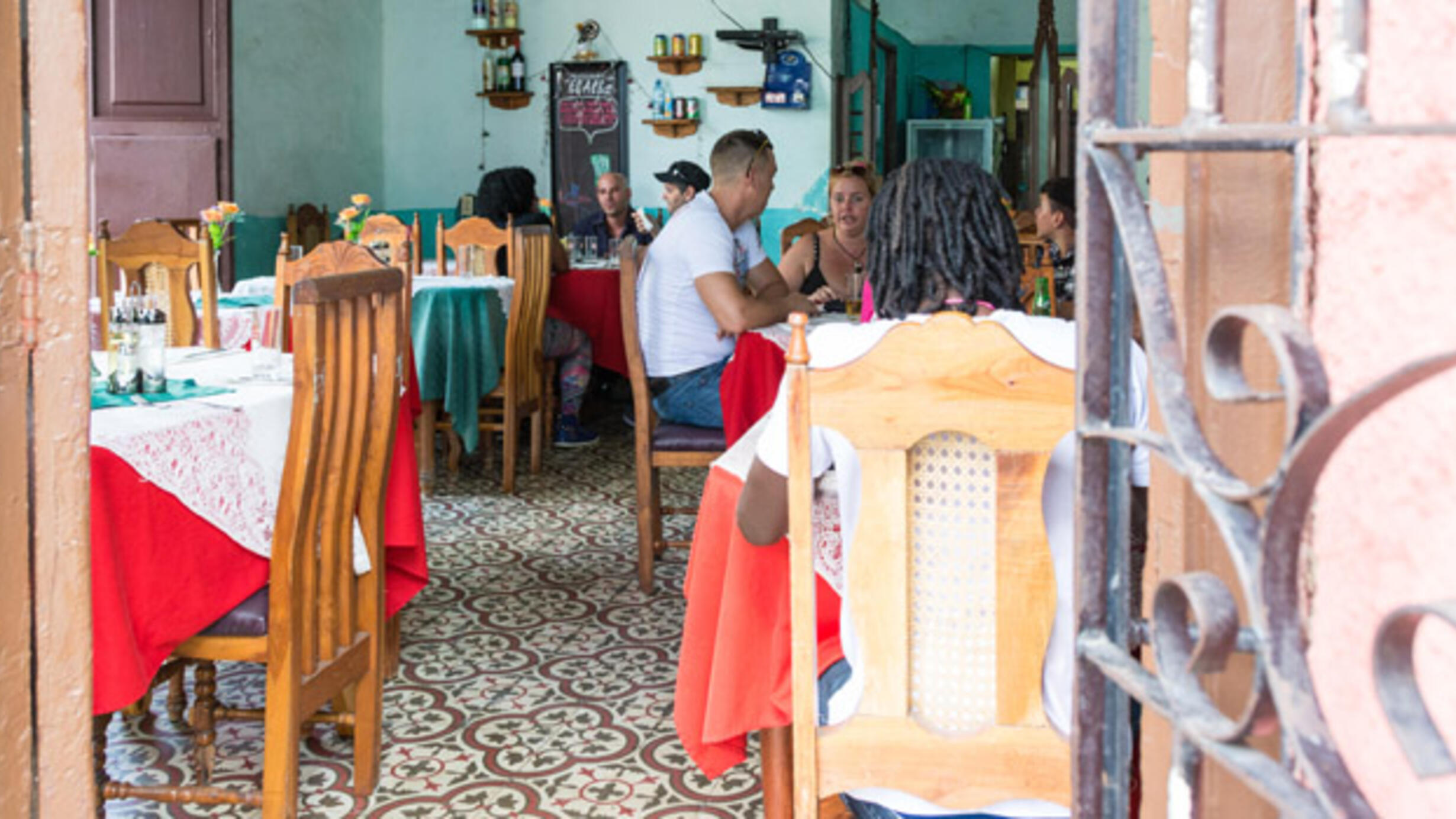Cuban Avenue
Part of the ¡Cuba! exhibition.
 Customers dining in a paladar, a restaurant run by self-employers.
Customers dining in a paladar, a restaurant run by self-employers.© Torontonian/Alamy Stock Photo
A Stroll in the City
Cuba’s city streets have been shaped by the country’s history as a Spanish colony and by the enormous wealth created by the sugar industry beginning in the early 1800s. In Havana, Cienfuegos, Camagüey and many other Cuban cities, stately plazas and grand boulevards are lined with colonnades— covered walkways with graceful arches and columns inspired by Renaissance Europe and ancient Greece and Rome. These airy, multicolored arcades offer protection from the sun and rain and open space for community life.
© Shutterstock
Still Rolling
Cars that date back many decades rumble down the streets in Cuba, including two-toned models like this 1955 Chevrolet Bel Air. What’s the story behind these vintage cars? From 1959 until recently, the Cuban state tightly restricted car imports and sales. So Cubans have found ingenious ways to keep old cars running, despite a shortage of spare parts. To meet the high demand for transportation, many drivers take passengers for a fee.
©AMNH/D. Finnin
The Store Next Door
Thousands of carts like this one sell fresh fruits and vegetables all over Havana. These small businesses represent a historic shift in how Cubans produce—and sell—food. Until the early 1990s, most forms of self-employment were not permitted, and almost all jobs were in the government sector. Today, however, city residents are encouraged to grow and sell food, as part of a coordinated, national plan to supply cities with fresh, organically grown produce.
© A-M Palmer/Alamy Stock Photo
The Rise of Small Business
The “bicitaxi”—part bicycle, part taxicab—emerged in the 1990s, when authorities allowed a variety of private businesses to operate alongside government industries. Bicitaxis represent just one drop in a wave of private enterprise currently sweeping the nation, with the government’s backing. In 1968, President Fidel Castro called small businesses “parasites.” But today, the government increasingly regards entrepreneurs as partners who contribute to the nation’s economic well-being.
© Dreamstime
Something Sweet
For a cold treat on a hot day, refreshment stands on many Cuban streets prepare iced sugarcane juice, or guarapo. This pale, mildly sweet liquid comes freshly pressed from stems of the sugarcane plant, Cuba’s most important crop. In the sugar industry, the same juice is produced in huge quantities, then boiled down to make crystalized sugar, along with molasses, which can be fermented and distilled to make rum.
© A. Lozinski/Alamy Stock Photo
CARNIVAL! Summer Celebration
Each July, thousands of tourists and locals alike fill the streets of Santiago de Cuba and other cities for Carnival. These huge celebrations, featuring processions, music, dancing and costumes, blend many strands from Cuba’s diverse history and ethnic traditions.
In much of the world, Carnival is celebrated in late winter or spring, during Mardi Gras. But Santiago de Cuba has long held Carnival in July, the time when farm workers traditionally completed the sugar and coffee harvests. Today, Carnival also includes a commemoration of the Revolution on July 26.
© Xinhua/Photoshot
Check out more of the exhibition—view modern Cuban poster art.
Top photo: © Torontonian/Alamy Stock Photo